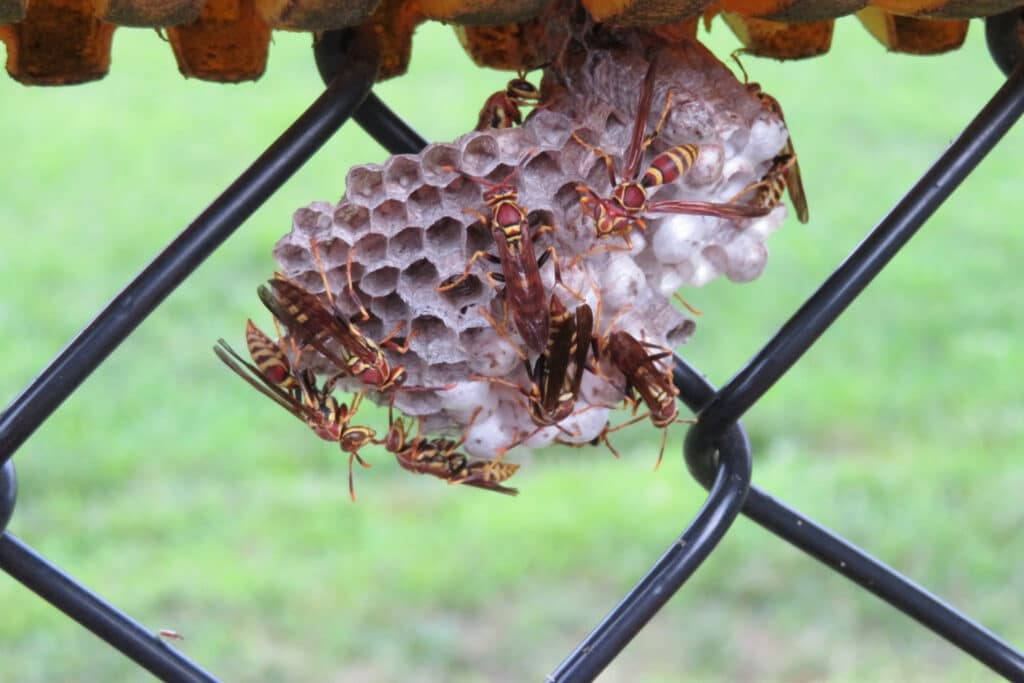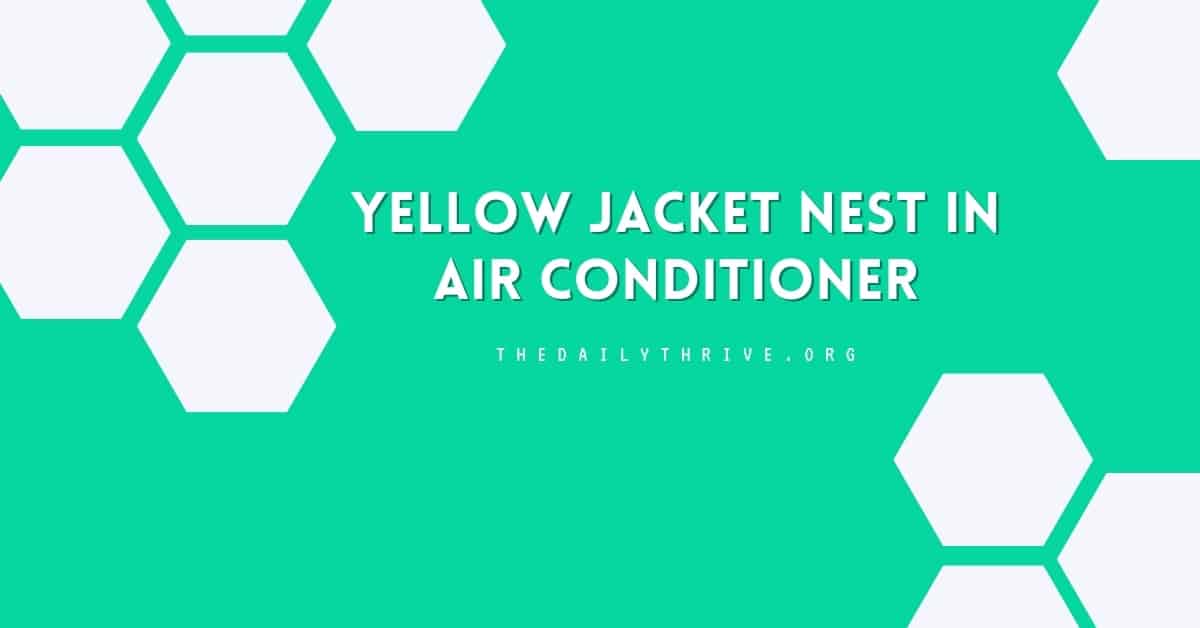We get plenty of questions from people who have an issue with their AC system. Every once in a while, when we get out on the scene, we find out the problem is related to a yellow jacket nest in an air conditioner.
Mice, birds, and large rodents are all attracted to air conditioning units because of the warm and safe environment they provide. Once inside, rodents have access to chew up all sorts of important insulation and wiring, and that’s when the effects of the nest become apparent to you.
Despite the fact an AC unit looks like a safe place to nest, it’s really not. Birds can become caught in fans, and electric shock caused by the unit easily kills mice. If an animal dies inside of your air conditioning system, you might notice an odd smell. If the air conditioner fans become jammed, even larger issues will arise, such as your AC not working altogether.
Many times people have no clue that there is an animal nesting in the air conditioner unit until it stops working completely.
Signs You Have A Nest In Your Air Conditioner
It’s not entirely common for animals such as a yellow jacket to crawl inside of an air conditioning unit and make a nest, although it does happen often enough for consideration.
Many times, if an air conditioner is not regularly inspected and maintained, yellow jackets have a chance to move in and build a home. Here they may live undetected for a good amount of time before you start to notice some problems with your air conditioner. Many people are shocked to find out that yellow jackets nesting in their air conditioner unit is the problem.
Here are some signs that you may have animals living in your air conditioning unit:
- You notice a foul odor coming from your vents
- Your AC is not working properly or stops working altogether
- You notice animal feces or nesting materials near the outside air conditioning unit
- You see animals or bees coming and going from the general area of AC or vents
Yellow Jackets In Air Conditioner
Another common culprit that loves to sneak inside air conditioners is the bee. You would much rather have an AC infested with honeybees than yellow jackets. Honeybees can only sting one time, but yellow jackets can sting several times.
If there is a yellow jacket nest in your air conditioner, there may be as many as 4,000 worker bees as well as one queen bee residing inside. In order to avoid becoming stung by a mass swarm of angry bees, it’s best to call out a professional if you suspect bees are nesting in your unit.

A clear sign that you have yellow jackets in your AC is if you notice them flying in and out of it.
How To Keep Bugs And Rodents Out Of Your Air Conditioning System
There really isn’t much you can do to 100% prevent wild animals from sneaking inside, although there are some precautions you can take to help reduce the risk for animals nesting in your unit.
There are metal and mesh blocks you can place at the entrances to panels, pipes, and cable entries, although these don’t guarantee rodents won’t find their way inside. Mice, for instance, are capable of compacting their bodies into incredibly small sizes in order to fit into spaces that seem far too small.
If you have rats in your walls or infest your garden shed right outside your back door, the chances for a few brave rats to get inside of your AC system increases. Keeping the borders around your home free of pests is a good way to reduce your risk of a nest forming in your AC.
If you keep pet bowls containing food or water outside, be sure and cover them, so you don’t attract insects and rodents near your unit.
The number one thing you can do to prevent yellow jackets from nesting in your air conditioner and causing huge problems is to sign up for regular maintenance. A professional HVAC technician will notice the indicators that animals are present right away, allowing you to take the right actions to have them removed before larger damages ensue. Catching the problem before it expands is key to saving money and possibly your entire unit.
If you are an animal lover, you don’t want to see these sweet little critters injured. If you are able to catch the problem early, the animal nests can be safely relocated elsewhere. If animals are allowed to remain within your AC system, they might die due to the dangers lurking within, such as rapidly rotating fans and electric shock. Having yellow jacket nests removed as soon as possible is good for the life of your AC, as well as the overall safety of the animals.






